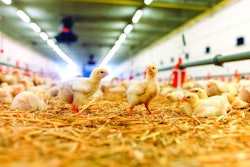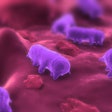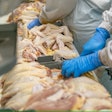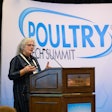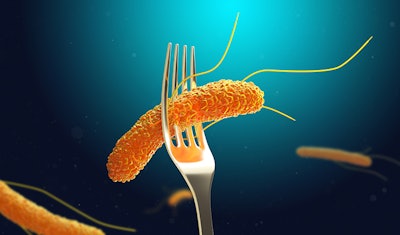
A continuous improvement strategy could help producers better manage Salmonella risk in poultry operations.
“Continuous improvement has been going on informally for many years,” Bill Potter, Ph.D., Elanco food safety technical advisor, explained. “But a formal model can really take it to the next level.”
This kind of approach relies upon increased flock monitoring for bacteria and is a data-driven approach to measuring and improving Salmonella loads preharvest using the traditional “Plan-Do-Check-Act” cycle as a basis.
Salmonella in poultry is under intense scrutiny right now. The U.S. Department of Agriculture (USDA) Food Safety and Inspection Service (FSIS) recently unveiled a proposed framework to improve Salmonella control in poultry products.
“The thing about Salmonella that’s unique to birds is that most of them are asymptomatic,” he added. “This is kind of a perfect storm in the poultry industry – a combination of the bird being a good host and humans are not a good host.”
A continuous improvement strategy for Salmonella control can be broken down into five steps:
1. Sample, measure and quantify Salmonella
A more thorough understanding of the serotypes of Salmonella present in a poultry operation is the first step to better preharvest control.
New technologies, such as quantitative PCR, most probable numbers (MPN) and automated mini-MPN methods, make it easier than ever to quantify the Salmonella loads in a poultry flock.
Measurements and samples should be collected at the farm (boot covers, environmental swabs, etc) or at the plant (pre-scald rinses, hot rehang or ceca sampling).
2. Decide on a baseline
For the next step in a continuous improvement strategy, management should identify the acceptable baseline standard for Salmonella in their complex. This decision makes anomalies easier to spot.
3. Spot the outliers
Poultry complexes can use the baseline data to identify outlier farms that have higher Salmonella results than expected. This is best achieved when multiple samples in a flock are quantified, but regardless, management should plan to test flocks for Salmonella on a regular basis.
4. Figure out why
Once outliers are identified, it’s important to follow up.
Audits based on best management practices to prevent or reduce Salmonella on the poultry farm are a good way to start. These checklists should include, but are not limited to, biosecurity practices, integrated pest management, litter and water management and bird health.
5. Implement a plan and follow through
Once the audit pinpoints problematic areas, it’s time to act. Some examples of these measures range from reducing litter moisture to stepping up pest elimination to Salmonella vaccines.






